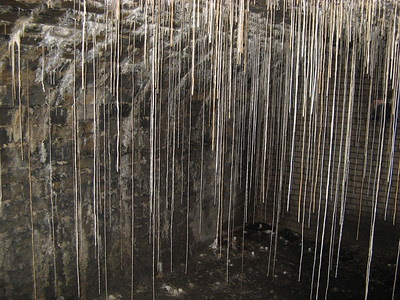Concerns of Creationists Misrepresenting Speedy Speleothems
Some folks get riled up when biblical creationists discuss them speleothems. More specifically, secularists impugn the integrity and intelligence of creation scientists, and appeal to opinion sites that sound sciency. However, that knife cuts both ways.
It is true that some creationists get a mite enthusiastic and use faulty pieces of evidence, and we try to encourage them to leave the doubtful stuff alone. Regarding stalactites, the situation is complex because there are various factors to consider regarding chemistry and growth rates.
 |
| Salterforth Pub stalactites, Flickr / Andrew Batram (CC BY-NC-ND 2.0) |
Uniformitarian geologists insist that stalactites and other speleothems take huge amounts of time to form. Creationists point out notable exceptions. In this post, I linked to an article about how stalactites under the Salterforth Pub formed rapidly.
Secularists get on the prod when things like this are given as evidence that speleothems can form rapidly, so they raise hob with creationists and use disingenuous comparisons. I'll allow that fair questions are raised. The chemistry is complicated, but the points raised by creationists remain valid.
Joshua from the US wrote into CMI in response to Gavin Cox’s article Defying deep-time dogma: Stunning stalactites in a pub cellar, questioning whether stalactites forming under man-made structures are comparable in terms of their chemistry and growth rate to natural cave formations.
I have read counter points from many critics of young speleothems claiming that speleothems forming under man-made structures, such as bridges or cellars, involve a different chemistry than those formed in caves. They claim that the mineral being deposited is from the concrete or mortar. However, I noticed you described the stones in the cellar or mortar of “old bridges” to be limestone or lime mortar. Are the speleothems that form under man-made structures due to a different chemistry? And do those forming in or under limestone structures stand against this claim? Thank you!Hi Joshua,
Thanks for writing into CMI with your question, it gives me opportunity to add more information to my article in terms of some chemistry details.
A strong knowledge of chemistry is helpful, but people can get something useful out of this article even if they don't have such training. To read the rest, click on "Speleothem growth — In caves vs man-made structures."